The use of electricity generated onshore is not necessarily always the reason for installing batteries. In many situations, the idea is that the batteries will in fact only be charged using the on-board generators.
So you might be forgiven for thinking what’s the point of installing batteries if the motivation is not charging from onshore? However, under certain circumstances, it is possible to use batteries to reduce both fuel consumption and emissions, including in situations where all electric energy are produced on board.
Wärtsilä and SINTEF have together developed a system for the contact-free charging of ferries.
What’s the point of installing batteries on marine vessels? And why charge from the diesel generators?
The main reason for installing batteries on any given vessel will vary depending on the vessel type and the operations it carries out. Typically, incentive will be provided by achieving reductions in of one or more of the following:
- Emissions
- Fuel consumption
- Costs
- Maintenance
- Acoustic noise
- Risk
Another reason may be that in the future, batteries will become a practical means of enabling compliance with an increasing volume of local regulations that place restrictions on emissions and noise, such as in conservation areas or in connection with harbour regulations.
Its important to be aware that batteries cannot solve all challenges related to emission from the maritime sector. Many vessels require huge amount of stored energy that in itself will be challenging even if batteries improve a lot, but also because it is difficult to see how it will be possible to provide sufficient charging capacity where it will be needed.
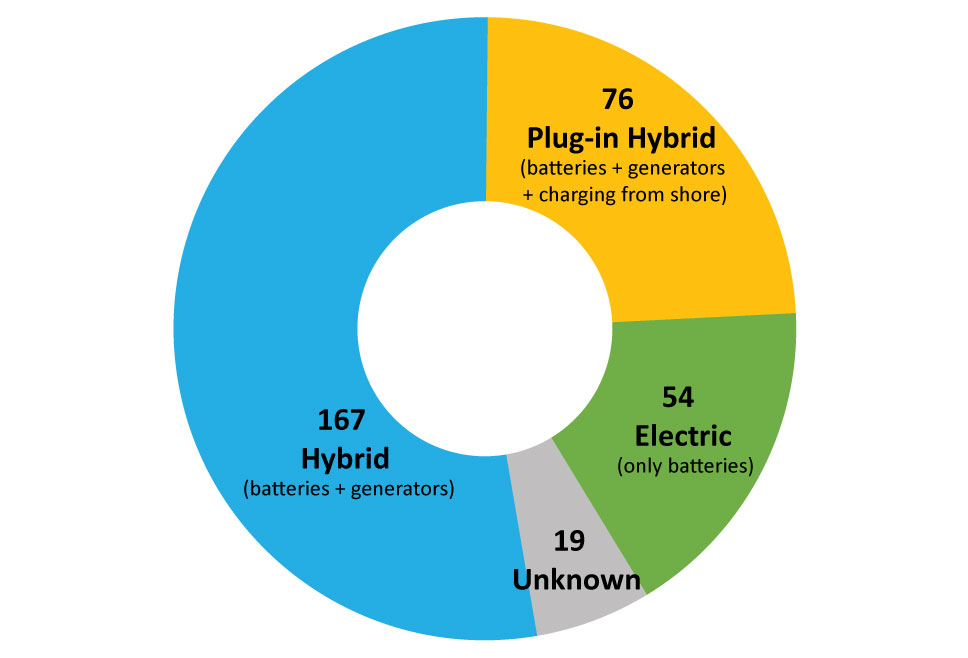
How does the installation of batteries benefit marine vessels?
In general, batteries can benefit marine vessels in the following ways:
1. Use of electricity as an alternative to diesel
Batteries enable electricity generated onshore to be used instead of diesel. In practice, this will not be possible for all vessels, but will result in reduced emissions and energy costs because in Norway, electrical energy is less expensive (per kWh) than that generated by diesel on board. Whether this will also lead to overall costs reductions will vary depending on the vessel in question, the type of operations it carries out, and any emissions charges.
2. Strategic loading of diesel generators
Batteries may be used to obtain a more optimal loading of diesel generators, allowing the latter to run more efficiently. You can read more about this later in this blog under the heading “Strategic running of diesel generators to reduce consumption”.
3. Spinning reserve
Batteries can also act as an accessible and instantaneous back-up system facilitating a stable supply of electricity to vessels carrying out critical operations (so-called “spinning reserve”). The current alternative is to keep a greater number of generators running than is strictly necessary, which results in significantly higher levels of diesel consumption. For some vessels, the use of batteries will lead to a greater than 10 percent reduction in both fuel consumption and emissions while such operations are in progress.
4. Smoothing-out diesel generator load peaks
Batteries can act as a reserve source utilised to meet additional, short-term, electricity needs enabling us to avoid running more generators than average load requires. In this way we avoid always having to turn an extra generator on and off, with the additional fuel consumption and extra engine wear and tear that this entails. Vessels carrying large cranes, and drillships in particular, will obtain great benefits from this arrangement. Moreover, batteries make it easier to utilise the braking energy that is generated as the cranes lower their loads.
5. Substitute for diesel engines when a vessel is not moving
Batteries make it possible to shut down all diesel engines when onboard electricity consumption is low, such as when a vessel is moored or at anchor. Naturally, the diesel generators must be started up now and again in order to charge the batteries, but this approach will spare the crew and vessel environs from engine noise and exhaust emissions. Emissions reductions will result because it will be possible to run the diesel engines at more optimal load during charging than is possible during constant low-load running. Running at more optimal load means greater engine efficiency and significant emissions reductions.
6. Enabling gas driven low-pressure Otto engines and fuel cells
Batteries can act as enabler for the expanded use of gas driven low-pressure Otto engines and fuel cells. Both technologies can contribute towards emissions reductions, although both also have limitations when it comes to rapid changes in power demand. For this reason, low-pressure Otto engines and fuel cells cannot be used as the only energy source on all types of vessels.
However, batteries may help to expand opportunities for the use of low-pressure Otto engines and fuel cells because energy flow in and out of batteries is precisely regulated, enabling energy production from gas engines and fuel cells to be ramped slowly up and down.
(Read: “Model Predictive Control of Marine Power Plants with Gas Engines and Battery“)
There is no avoiding the fact that some energy will be lost from batteries and the associated power electronics that are needed to regulate charging and discharging. However, this has little significance for items 2, 3, 4 and 6 (above) because only a small fraction of the energy flows via the battery, and the battery is only used sporadically.
However, it is important to be aware that it will not always be beneficial to install batteries. This must be assessed on a case-by-case basis.
Besides, we must also be aware of how the battery is being used. Anticipated benefits will not materialise if batteries are used incorrectly. Incorrect use may also result in the opposite of the desired effect. Incorrect use or flawed design may also cause batteries to lose their storage capacity much faster than planned.
What is SINTEF Energy Research doing in the field of batteries installed on marine vessels?
SINTEF Energy Research has extensive experience in the design, control and optimisation of power systems. This also includes the design and control of power electronic converters that are significant and essential components used to facilitate the use of batteries installed in power systems. We use this experience as a basis for our research into the challenges linked to batteries and other energy storage alternatives on marine vessels. This work includes the following:
- Methods for determining the optimal energy capacity (in kWh) and power output (in kW) of battery systems
- Methods for taking into account the connection between battery lifetimes and use profiles
- Optimal control of energy flow that influences lifetime, discharge rates, costs and benefits
- The integration of batteries, converters and power systems
- To evaluate alternative systems with regard to fuel consumption and emissions
- To validate control strategies using simulations and laboratory experiments
Other divisions at SINTEF are carrying out work on affiliated topics, such as ship design optimisation and the development of new and better types of batteries. SINTEF also conducts research into the use of gas engines and fuel cells on marine vessels.
In June 2018, SINTEF Energy Research was represented at the IEEE Transportation Electrification Conference and Expo, where we presented the article Design of Minimum Fuel Consumption Energy Management Strategy for Hybrid Marine Vessels with Multiple Diesel Engine Generators and Energy Storage .
The article presents the results of an ongoing research project that is investigating the best way of optimising the size and utilisation of energy storage units installed on marine vessles. The article addresses the following topics:
- Approaches to estimating the expected benefit of installing batteries when we do not know the details of the resulting load profile
- Approaches to establishing an optimal control strategy for the parallel operation of a battery and diesel generators. In other words, a strategy for when, and how much, to charge and discharge the battery.
- Approaches to balancing a battery’s lifetime with a given desired reduction in diesel consumption.
Details:
Strategic running of diesel generators to reduce consumption
On most vessels, diesel generators are operated at constant rotation per minute (RPM) in such a way that they generate alternating voltages at a constant frequency of either 50 or 60 Hz. Typically, diesel generators that operate at constant RPM exhibit efficiencies that vary greatly depending on how much electrical energy they produce. In other words, the amount of energy that can be obtained from a litre of diesel will vary (see the figure below).
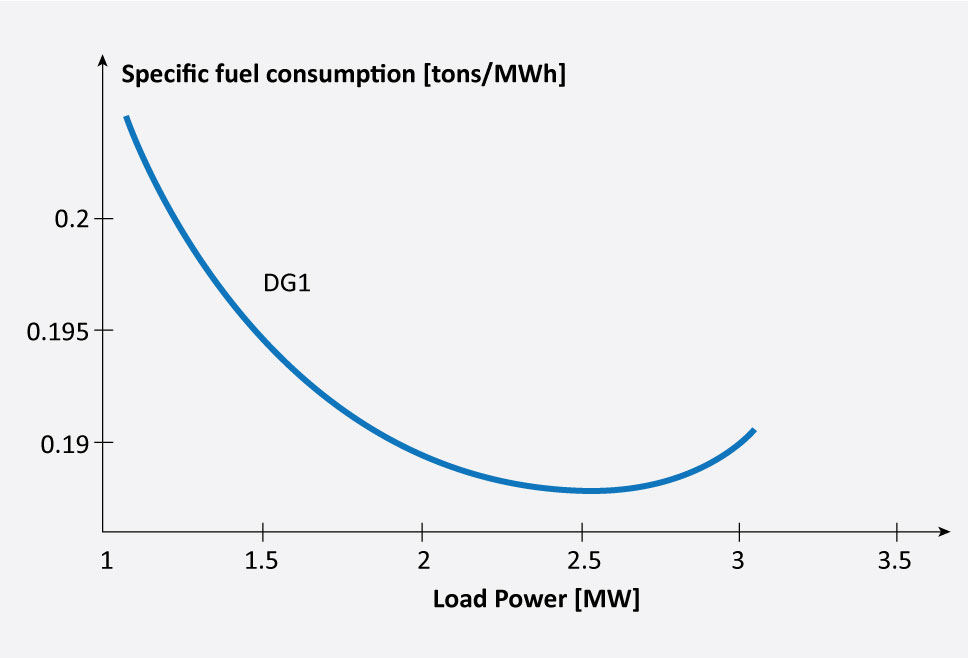
Typically, we obtain most electrical energy per litre of diesel when the generator is running at approximately between 80 and 100% of maximum production. This varies depending on the engine design and how it is tuned. On a vessel not installed with batteries, the diesel generator load will be dictated by the level of electrical energy consumption at any one time on board (including consumption linked to propelling). For many vessels this will mean that the generators is often operated at poor levels of efficiency.
Today, most vessels are installed with more than one diesel generator
Many diesel generators offer the possibility of varying the number of those actually running, depending on the load. This allows us to achieve a better average level of efficiency than if we had been running all the generators all the time, and better than if we had installed just one large diesel generator to cover all load variations.
This is illustrated in the figure below.
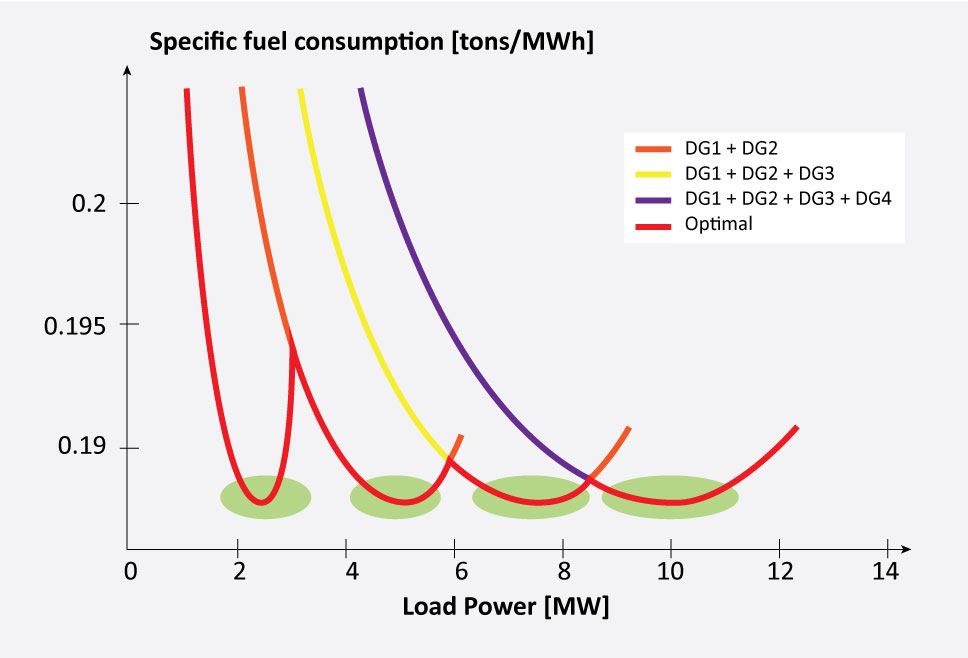
If we opt to install batteries, we are no longer dependent on having to produce the exact amount of energy required by the vessel at any given time.
Instead, rational control of energy flow in and out of the battery allows us to ensure that the load on the diesel engines is such that they exhibit constant high levels of efficiency. In other words, by endeavouring at all times to operate within the green ellipses in the figure above.
It must be mentioned here that an alternative to the strategic loading of the diesel engines is to run the generators at variable RPM values. This enables us to achieve much the same result in terms of improved engine efficiency. However, this requires that we convert the energy generated on board to direct current (DC) instead of 50 or 60Hz alternating current (AC). Whether this represents a better solution for any given vessel will, however, depend on many factors other than the consumption reductions described in this blog.
Can batteries lead to increased diesel consumption?
There is no getting away from the fact that some energy will be lost in situations where some of it is provided via a battery. Losses linked to the battery system will mean that in all load situations we will never achieve the greatest reductions in consumption (per MWh) as shown in the figure above. However, if rational control is applied, reductions in consumption will be achieved.
The potential for reductions will be highly dependent on the efficiency curves of the diesel generators used, the efficiency of the battery system and, not least, any variations in consumption on board the vessel. As the figure illustrates, the greatest potential lies in connection with large vessels that operate for the most part at low loads.
SINTEF has been looking more closely into battery designs and, not least, methods of regulation of energy flow that optimise the return on our investments. Among other things, these analyses indicate that it is not economically viable always to use batteries as part of controlling the strategic loading of generators. For the most part, a battery should only be used when consumption deviates significantly from the optimal, i.e. when the load range is well outside the green ellipses in the figure.
Furthermore, when batteries reach a certain size, it is common that further increases aimed at controlling strategic loading cease to be economically viable. The added cost simply does not justify the benefits. This is because there will always be an upper limit on the benefits that can be obtained. As long as batteries are not charged from onshore, and have no other energy sources on board, it will never be possible to reduce diesel consumption below the levels required in order to generate all the load energy needed to achieve the optimal working point of the diesel generator in question.
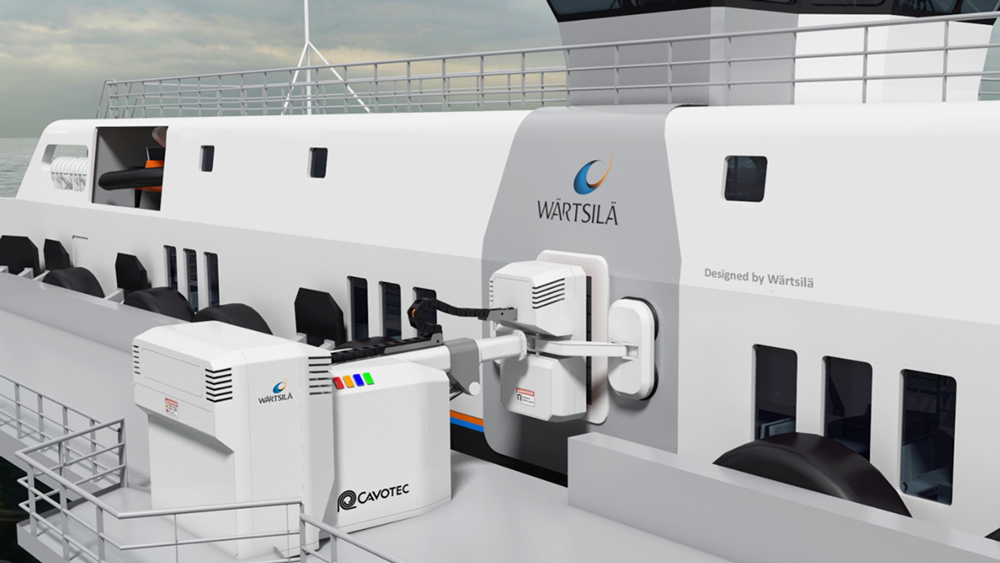













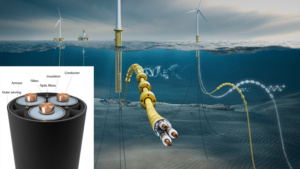





Comments
I love this article ! Diesel Engine in uttar pardesh
About why installing batteries on ship is important have been discussed over here .I love this article, thanks for producing such great contents. I love your posts always .It is very useful article and would suggest others too. I am sure many people will come to read this in future. I never thought will get to visit this Franklinme.co.nz oh, has some nice content for everyone.
Yes! very useful, Just at a time I needed these information…Great content
The article is very interesting and can give a right outlook on the applications even for non specilized people